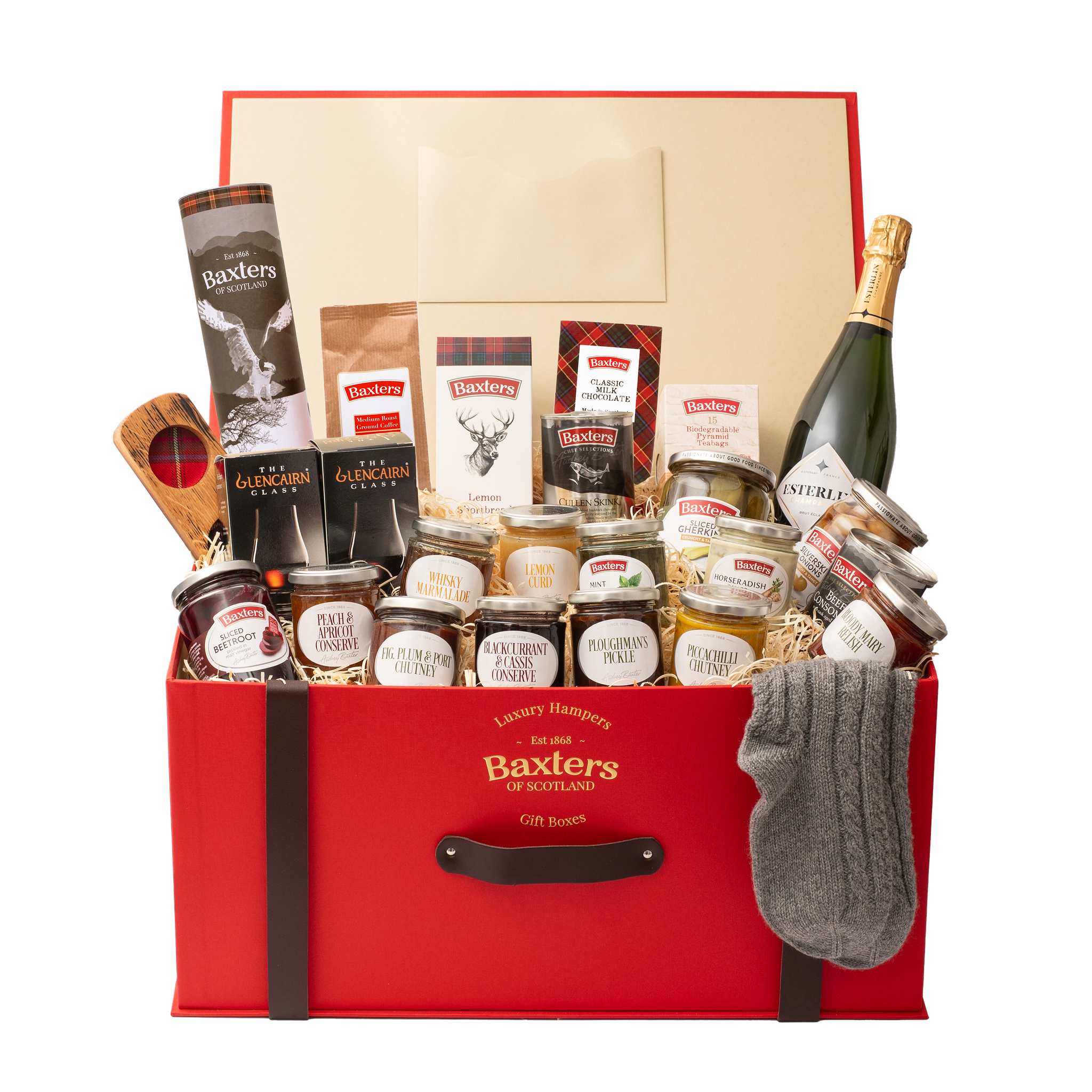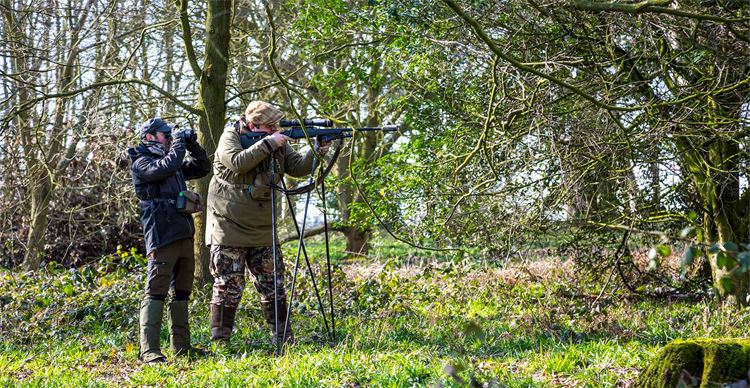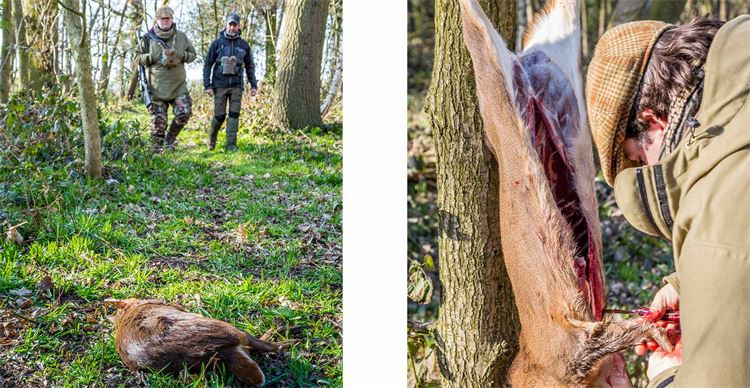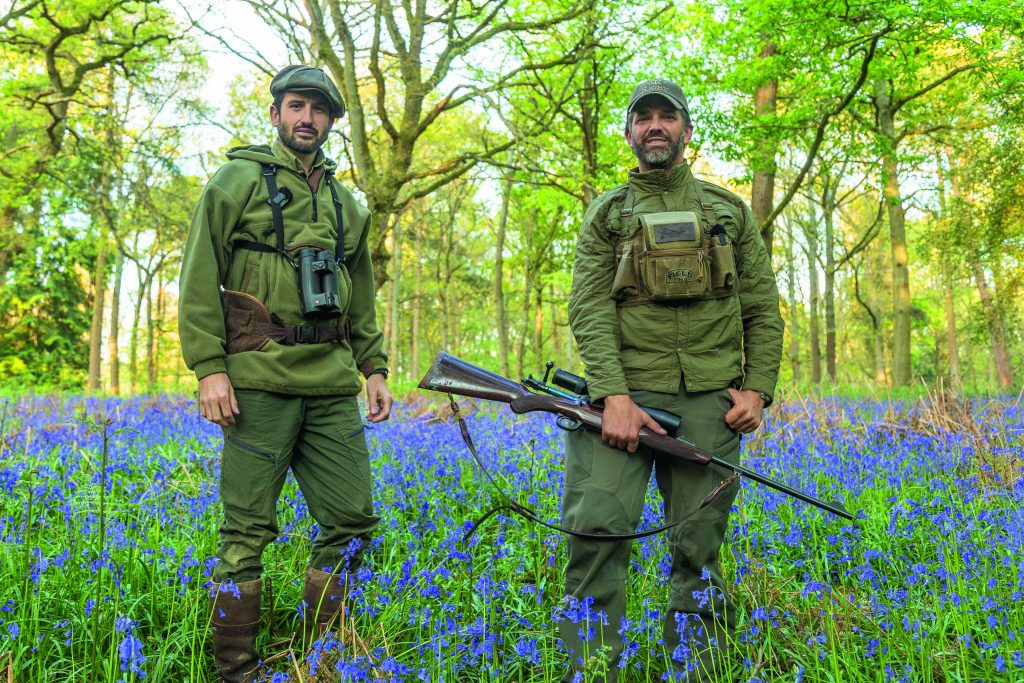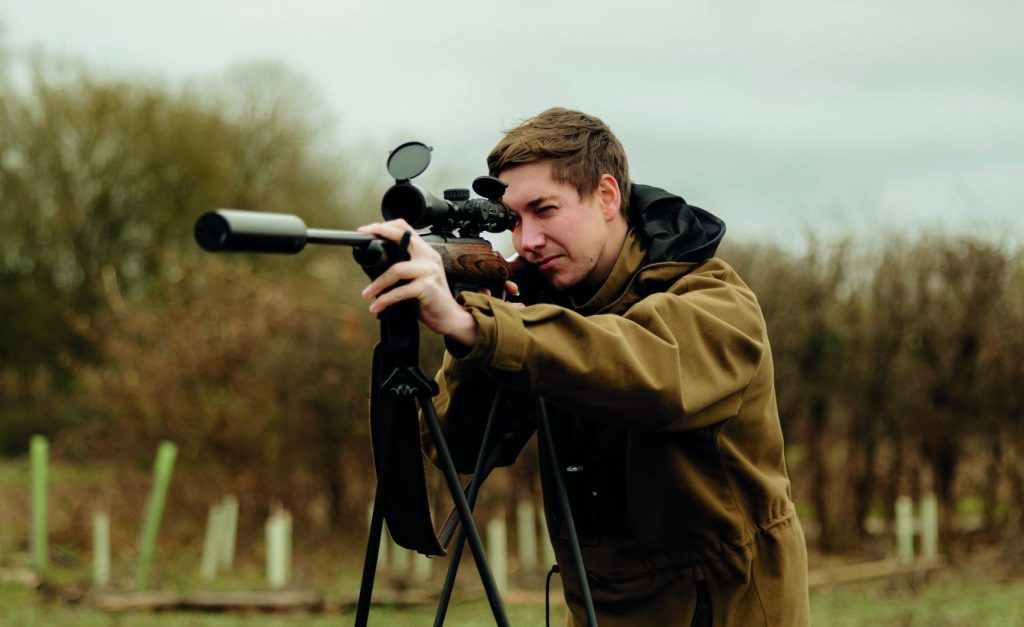Muntjac in focus
Swapping the Scottish Highlands for the south of England, Sam Thompson joins Rob Minty to learn more about the UK’s smallest deer species and its management.

I’ve found that one of the brilliant things about working in the deer industry is that some people just click with you immediately. Rob Minty is an ex-keeper turned self-employed deer stalker, and within a few minutes of chatting it became very clear that despite being based at opposite ends of the country, we have much in common. A burning passion – probable obsession – for deer is a rare thing, and it didn’t take long for a trip to be organised.
Hailing from the north of England, and living above the Highland line in recent years, I’d never seen a muntjac (Rob’s main deer species) and the opportunity to learn about them was too good to pass up. A few cans of Irn Bru and a lot of miles later, I found myself marvelling at the lack of hills and straightness of roads on the Norfolk/Suffolk border. Interest in undulation was soon forgotten, however, when binoculars in hand we walked through a small woodland block and I was presented with my first glimpse of Muntiacus reevesi.
Much has been written on the appearance and habits of deer, and I remember religiously learning the identifying features of muntjac when studying for my Deer Stalking Certificate, but nothing had really prepared me for their peculiar appearance. The animal in front of me was a doe, which you differentiate from the bucks by the markings on the head and lack of antlers. Hunchbacked, she grazed her way across the woodland floor in front of us, head down but almost bouncing in a trot – it was an extraordinary scene. Over the next few hours of slowly walking the forest tracks, we saw in excess of 20 more of the little deer, as well as roe and fallow.
Rob’s business, like my own, takes two strands; firstly he provides a deer management service to estates and farms, and secondly he guides clients on areas of stalking that he leases. Whether on fen or strath, the issues around deer are very similar, and it was interesting to share our thoughts on deer management as we wandered around the forest.
Moving between areas of zero deer tolerance and other forest blocks where stalking with clients takes priority, the evidence of deer was everywhere and a common theme emerged. Where in Scotland we will normally see damage at one or two levels on a tree, the presence of muntjac combined with the roe, fallow and reds meant that three or four different areas of stripping were visible, and the effect was clear to anyone with an eye for tree health.
Where cost effective, Rob has used deer fencing and culling to good effect, and by fencing in small blocks he has established easy to manage beats. As a result, finding any animals that may make it through the fence is less of a challenge. While more expensive in the first instance, this means contracted hours catching up with problem animals are vastly reduced, and saves the owner money in the long term, especially where muntjac are involved.
Embracing technology, Rob uses a GPS tag system to mark the exact location of culled animals. Examining his spreadsheets and maps, it’s quite clear that over the past couple of seasons muntjac have been particularly quick to move into any vacant territories. While there’s very little accurate count data available for muntjac, Rob is convinced that numbers have been increasing steadily over the past 10 or 15 years, and as a result the territory sizes have reduced quite significantly. This change in the population dynamic explains a lot of the worry amongst farmers and foresters for their crops; management of numbers has become more of an issue.
A drive south into Hertfordshire to another estate Rob manages highlighted the issue faced by what seems to be the majority of landowners in the area. A group of recreational stalkers had been stalking on the estate in question for some years, but the tree damage continued to increase until the manager decided that a different approach was necessary. Following similar practices as we do in the north, Rob estimated deer usage of key areas and damage percentages, before outlining a cull plan for the estate that would aim to minimise losses to the forest enterprise.
After a brief chat and a brew with the estate’s keeper, we kitted up and headed into the woods to try and finish off Rob’s cull. Like the majority of woodlands in the area, planting had been designed for driving pheasants, and small copses and thickets linked larger blocks of oak, sweet chestnut, holly and hazel. This is ideal habitat for muntjac, and unlike the forest in Norfolk, the almost continuous cover offered by the brambles meant that at this time of year the deer rarely break into open ground. Rob had stalked the estate with clients and achieved most of his cull, with only half a dozen animals left to take, and so he opted to save his shoulder and we took only one rifle.
The notion of following someone else on a stalk is an odd one for me, but I took to the task with great relish. How freeing it is to not think too much about the route, the wind or the neighbours. Stopping every five steps or so, it soon became apparent that glassing much closer than I am used to was the order of the day. While the bluebells were a good way off flowering, it was clear that they are a favourite food for the little Asian deer, whilst the laurels in the area are also particularly susceptible.
With a strong wind coming through the first wood we stalked, we saw only a mature buck for a few seconds – just long enough to estimate him as being of medal class – before his steady trot carried him thick into the holly bushes. Not to worry, an animal like that is better sold to a client when the time comes than fall to my rifle. Cutting across one of the many arable fields criss-crossed with the tracks of poachers, we slowed the pace down as we came into the second wood. Here there was much less damage inflicted by deer, with coppice growing well and plenty of saplings breaking through the forest floor.
Two years into Rob’s management process, browsing by muntjac still affects young tree stock, but a 30 per cent reduction on the initial damage survey has been achieved. By carrying out some of the stalking with clients, and marketing that stalking towards competent stalkers looking to gain more experience, deer management will make the estate a profit in 2018 for the first time, taking into account operational costs and the damage to woodlands.
We shuffled on, dry hazel twigs slowing our progress, until we stopped on the edge of a glade. Setting the rifle onto the sticks, I made sure the scope was dialled down to four-power before Rob started squeaking with the Buttolo. Because the muntjac rut all year round, there’s always a chance of the call working, but it wasn’t to be, and after a good few minutes without anything showing, we moved on again. To my knowledge the muntjac is unique in that regard; hardly is there a time in the life of a female deer when she isn’t pregnant. After her first six months she will be fertile, and then once she’s given birth it’s usual to be pregnant again within the week. It’s hardly surprising that they are so prolific.
The year-round breeding is the reason that muntjac have no shooting season, but it poses an issue when you’re trying to select does for culling as there could be a dependant young animal with her at any time of year, unlike our other species. Rob looks for slow-moving and heavy set does, also examining facial details to determine age, just like you would with red or roe deer. This means that with a good margin for error he can be sure that young animals are not being orphaned when he’s shooting female deer.
Those decisions all went through Rob’s head before I had managed to spot the doe that was feeding 40 metres in front of us. It took me an embarrassingly long period of time to realise that I was looking at the wrong bit of brambles, and I lost sight of her again between dropping my binoculars and raising the rifle… and then she was gone. We glassed for what seemed like minutes, changed position and glassed again, but she was nowhere to be seen. Slightly red in the face, and wondering how many pints I’d have to buy in the pub later to live it down, I followed Rob a little further towards where we’d lost sight of her.
Freezing mid-step is a skill understood by deer men and few others. Before Rob was even whispering the directions to me, I very slowly unslung the rifle and started to raise it to shoot from the un-opened sticks. At all of 25 metres it was not a challenging shot, and she fell where she stood to a well-placed bullet.
After getting over quite how small she was, it was a chance for me to have a go at a suspended gralloch – the norm for Rob but a new technique for me which proved a handy way of keeping everything clean and out of the way. Where there is so much public access, deer management has to be subtle, so we buried the gralloch in the wood and carried the carcass back to the vehicle.
Chatting in the larder, Rob explained how prices for muntjac can be as low as 50 pence a kilo, with dealers put off by relatively high processing costs compared to the larger species. With such a high concentration of these deer in certain areas, and such proximity to London, Rob is trying to develop a better market for the venison, which many people regard as some of the best available.
All of these aspects of deer management cross the border, and no doubt extend to most people in our profession across the country. In a time of ever-changing pressures on our deer population, it’s a case of stalkers talking more amongst ourselves and learning from each other to ensure we have a viable industry to be a part of, and a healthy, sustainable population of deer to be proud of.
Related Articles
Get the latest news delivered direct to your door
Subscribe to Fieldsports Journal
Elevate your experience in the field with a subscription to Fieldsports Journal, the premium publication for passionate country sports enthusiasts. This bi-monthly journal delivers unparalleled coverage of game shooting, fishing and big game across the UK and beyond.
Each issue offers a stunning collection of in-depth features, expert opinions and world-class photography, all presented in a timeless yet contemporary design.
Save 10% on shop price when you subscribe, with a choice of packages that work for you. Choose from Print & Digital or Digital only with each journal delivered directly to your door or via the app every other month, plus access to past issues with the digital back issue library.





